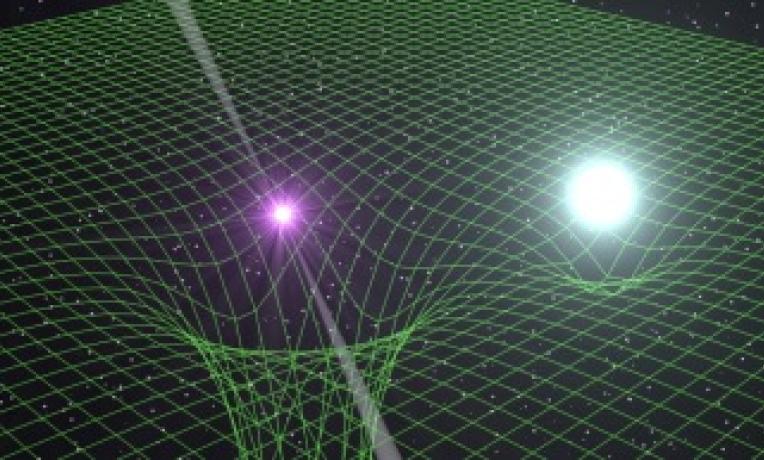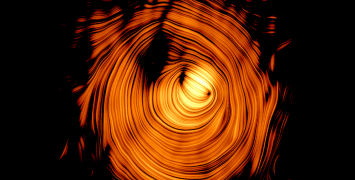A heavyweight for Einstein: Probing gravity where no one has done it before
An international research team led by astronomers from the Max Planck Institute for Radio Astronomy (MPIfR, Bonn, Germany) used a collection of large radio and optical telescopes to investigate a newly discovered pulsar, and its white dwarf companion. The observations revealed a system with unusual properties, which weighs twice as much as the Sun, making it the most massive neutron star to date. These findings partly result from the “BEACON” project led by ERC Starting grantee Dr Paulo Freire, and agree with Einstein’s theory on general relativity. They will be published in tomorrow’s issue of Science, April 26, 2013.

In cooperation with: Max Planck Institute for Radio Astronomy
Imagine half a million Earths packed into a sphere 20 kilometers in diameter, spinning faster than an industrial kitchen blender. These extreme conditions, almost unimaginable by human standards, are met in neutron stars – a type of stellar remnant formed in the aftermath of a supernova explosion – which offer the opportunity to test physics under unique conditions. Neutron stars were first discovered around 50 years ago as pulsars which emit radio pulses like a lighthouse.
The pulsar in orbit, known as PSR J0348+0432 and its white-dwarf were recently discovered with the Green-Bank radio telescope. Separated by just 830,000 km, the pulsar and the white dwarf in this system are close enough to emit a significant amount of gravitational waves. According to the theory of general relativity, this close distance should make the orbital size and period shrink but to verify it, both the mass of the pulsar and its companion must be known.
“I was observing the system with the European Southern Observatory’s Very Large Telescope in Chile, and I was trying to detect changes in the light emitted from the white dwarf caused by its two million km/h motion around the pulsar. These changes of light allow us to weigh both the white dwarf and the pulsar”, says John Antoniadis, a member of the research team at MPIfR and the leading author of the paper. “After a quick analysis, I realized that the pulsar was a kind of heavyweight: a mass twice that of the Sun, making it the most massive neutron star we know about.”
With these masses, it is possible to calculate the amount of energy taken away from the system by gravitational waves, causing the orbital period to shrink. The team realized that this change in the orbital period should be visible in the radio signals of the pulsar and they focused on PSR J0348+0432, using the three largest single-dish radio telescopes on Earth (Green Bank, Arecibo and Effelsberg).
“Our radio observations with the Effelsberg and Arecibo telescopes were so precise that, by the end of 2012, we could already measure a change of 8 microseconds per year in the orbital period, exactly what Einstein’s theory had predicted”, states ERC grantee Paulo Freire from MPIfR. “The funding of the European Research Council is a truly momentous occasion for young researchers to conduct their research and acquire the equipment they need. My ERC grant will help us to develop a new state-of-the-art instrument for the Effelsberg radio telescope. With this new cutting-edge instrumentation, we expect to improve further the accuracy of today’s results.”
In terms of gravity, PSR J0348+0432 is a truly extreme object, even compared to the other pulsars used in the high-precision tests of Einstein’s general relativity. For instance, at its surface, the pulsar has a gravitational strength that is more than 300 billion times stronger than that on Earth. In its center, more than one billion tons of matter is squeezed into a volume of a sugar cube. These numbers nearly double the ones found in other ‘pulsar gravity labs’.
Despite these extreme conditions, the research team finds that the theory of general relativity still holds true.
The findings are also important for scientists who search for gravitational waves emitted by a collision between two neutron stars. These new measurements give them added confidence in the equations that describe the emission of gravitational waves during these mergers. These equations are the result of decades of mathematical research in general relativity and will be required to identify the first gravitational waves, which the team expects to happen within the next five years.






